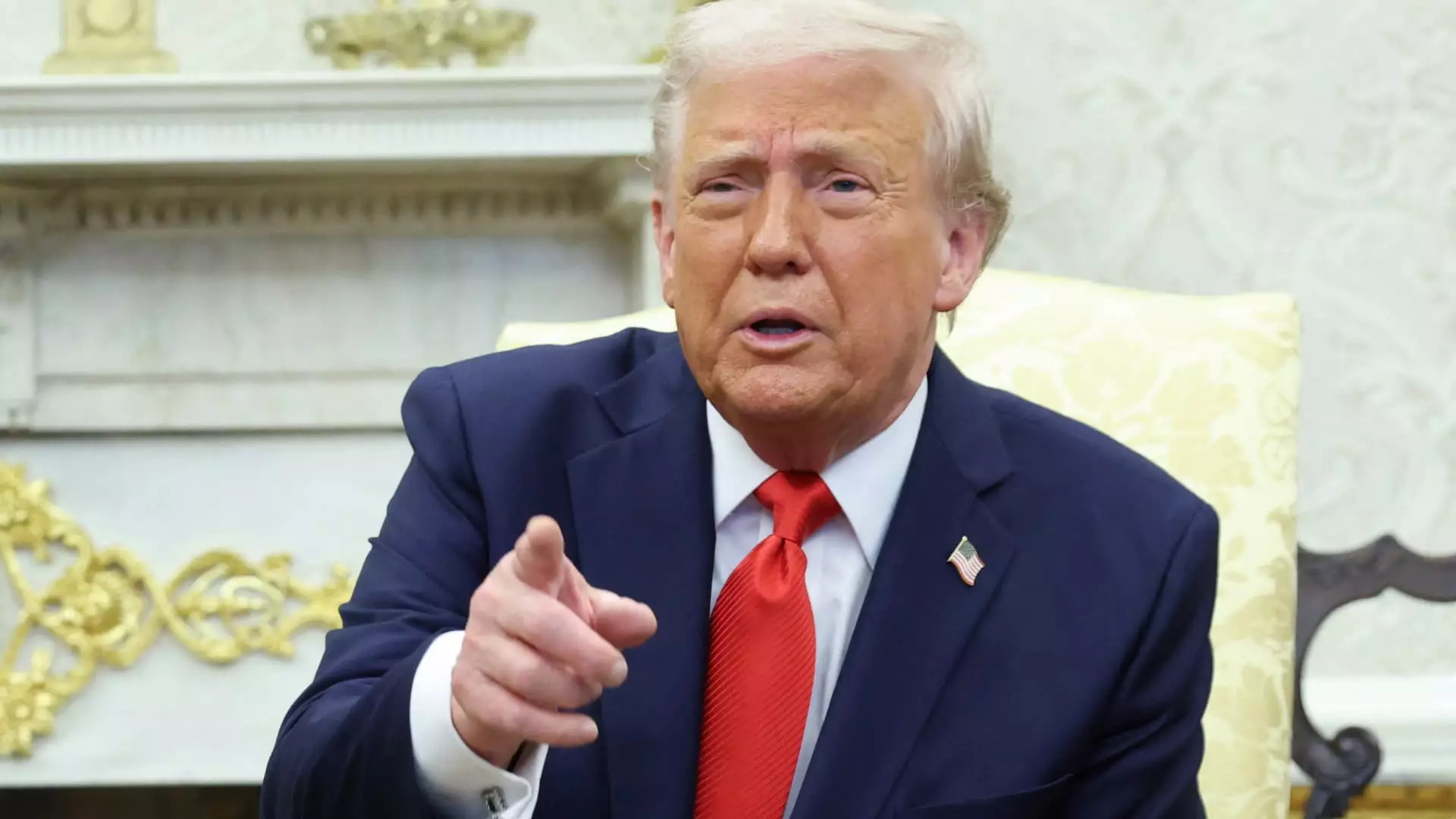In a surprising twist during a recent Oval Office meeting, President Donald Trump unveiled plans to support American automakers amidst a backdrop of anxiety within the industry. Amidst rising tariffs and international trade complexities, Trump’s remarks appeared to light a beacon of hope for manufacturers feeling the economic pinch. His assertion that automakers need “a little bit of time” to transition their operations within U.S. borders raises critical questions about the long-term viability of American manufacturing and the broader economic implications.
Many investors reacted positively to the President’s comments, seen as a lifeline for major players like Ford, General Motors, and Chrysler’s parent company, Stellantis. As share prices climbed up to 4%, it becomes apparent that Wall Street is betting on Trump’s promise, despite the underlying issues that remain unresolved. This rally also highlights a curious short-sightedness among investors who seem more focused on immediate gains than the structural challenges that American automakers face.
The Tariff Impact: A Double-Edged Sword
It’s hard to ignore the implications of the 25% tariffs on imported vehicles that Trump announced back in April. While these measures were positioned as necessary for national interests, they have left the automotive industry in a precarious situation. Various manufacturers have pivoted their strategies in direct response to these tariffs; Ford and Stellantis are slashing employee pricing temporarily, while others like Jaguar Land Rover are pulling out of the U.S. market altogether. Here arises a juxtaposition: the tariffs, intended to protect American jobs, have had immediate effects that are often detrimental to the economy.
The administration’s recent exemptions offered to tech giants like Apple but not to car manufacturers reveal a selective approach that could hinder the auto sector’s ability to thrive. If the intent is genuinely to empower American jobs and production, allowing some companies wiggle room while disregarding others raises eyebrows. It poses the risk of creating an uneven playing field, where only a select few benefit while the broader industry struggles.
Temporary Relief vs. Lasting Change
Trump’s approach may buy time for automakers trying to shift their supply chains back to the U.S., but whether this will lead to a sustained recovery remains uncertain. The temporary relief offered could foster complacency rather than sparking innovation and structural changes within the industry. The focus should not only be on localizing part production but on rethinking how American manufacturers can compete sustainably in a global market, where efficiency and adaptability define success.
Moreover, the heels of this policy move beg a critical examination: can auto manufacturers truly absorb the costs associated with a transition, or will they simply pass them along to consumers? These questions merit scrutiny, as they directly impact American families already grappling with rising prices in various sectors.
The auto industry stands at a crossroads, caught in the tension between protectionist policies and the global market they operate within. While Trump’s words may paint a picture of encouragement, the reality on the ground may well entail profound struggles yet to come.

